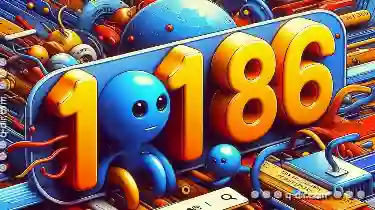Where visual interfaces reign supreme, it’s easy to overlook the humble address bar - that seemingly mundane line of text at the top of your browser ...
 window. However, upon closer inspection, one can appreciate its aesthetic and functional beauty, akin to a tribute to the minimalist yet powerful design elements found in text-based interfaces.
window. However, upon closer inspection, one can appreciate its aesthetic and functional beauty, akin to a tribute to the minimalist yet powerful design elements found in text-based interfaces.1. The Art of Minimalism
2. Function Over Form
3. Typographical Delights
4. Integration and Contextual Awareness
5. Personalization Options
6. The Future Aesthetic
7. Conclusion
1.) The Art of Minimalism
The first thing that stands out about the address bar is its minimalistic approach. Unlike other parts of the browser interface which often bombard users with numerous icons and visual cues, the address bar sticks to plain text. This simplicity allows for maximum focus on what truly matters - the web address you are navigating to. The absence of unnecessary clutter makes it easier for users to read and process information quickly.
2.) Function Over Form
While the aesthetic may be minimalistic, the function is anything but simple. The address bar serves as a gateway to the vast expanse of the internet, housing not only URLs but also search engines and commands that can enhance your browsing experience. This functionality allows users to perform searches directly from the field, quick access to frequently visited sites through bookmarks, or even run JavaScript commands for automation tasks.
3.) Typographical Delights
The text within the address bar is often typographically styled in a way that complements its utility. Colors might range from black (the traditional and widely compatible choice) to blue (a color universally recognized as links), providing clear visual cues about what can be interacted with, such as hyperlinks or input fields. Some browsers even offer themes where the text color can change dynamically based on the website’s theme, adding a layer of subtle interaction without cluttering the interface.
4.) Integration and Contextual Awareness
Modern address bars are not just conduits to websites; they are integral parts of the operating system’s UI. This integration allows for contextual awareness where suggestions for navigation or quick access based on your history or bookmarks dynamically appear as you type, making navigation more efficient without requiring additional clicks. This level of context-awareness helps in reducing cognitive load and improves user experience.
5.) Personalization Options
For users who feel the urge to personalize their digital environment, most modern browsers offer extensive customization options for the address bar. Users can add extensions or widgets that not only improve functionality but also infuse a sense of individuality into the interface. From adding weather forecasts to displaying custom search engines, personalizing the address bar transforms it from a utilitarian element into a personalized tool.
6.) The Future Aesthetic
Looking ahead, one might consider how advancements in technology could further enhance the aesthetic and utility of the address bar. For instance, voice recognition or augmented reality interfaces could potentially redefine how we interact with this text-based interface. While these futuristic scenarios are speculative, they hint at a future where the aesthetics and functionality of the address bar will continue to evolve alongside technological progress.
7.) Conclusion
The aesthetic journey of the address bar is one that celebrates minimalism, utility, and personalization. From its humble beginnings as a simple text field, it has evolved into an interface element that contributes significantly to both usability and user experience. As technology progresses, we can only expect more innovative ways in which this seemingly simple yet powerful tool will continue to adapt and thrive in the digital landscape.

The Autor: / 0 2025-05-08
Read also!
Page-

Columns' Hidden Gems: Customization for the True Power User
While many designers focus on pre-built templates and drag-and-drop interfaces, there’s a whole realm of possibilities waiting to be explored when ...read more

Bulk Renaming Performance: Why Your PC Slows Down
When it comes to managing files and folders, bulk renaming can be a powerful tool. However, many users encounter the frustrating issue of their PCs ...read more

How to Paste Files Using PowerShell
PowerShell, a task automation and configuration management script language from Microsoft, is incredibly powerful for managing files and folders. One ...read more